The ideal place to house string inverters on commercial rooftop solar projects is indoors in a climate-controlled, locked room — but that’s not always feasible. When ground-level mounting options are scarce, installers often put these fragile power electronics on the rooftop alongside the array.
Solar installers started bringing inverters to the roof level when rapid shutdown requirements were introduced in the 2014 National Electric Code. The easiest and most cost-effective way to comply with rapid shutdown on commercial rooftops was through what installers termed the “10-ft rule” — installing the inverter within 10 ft of the solar array. Installers would mount inverters on angled steel “sleds,” made by the inverter manufacturer or third-party providers like Shoals or Bentek, within 10 ft of the array.
When the 2017 NEC update requiring module-level rapid shutdown went into effect, the 10-ft rule no longer met the code. Since solar panels now have to handle shutdown actions in jurisdictions that have adopted the 2017 NEC, the inverter can be placed anywhere. The motivation for mounting string inverters on the roof is no longer primarily code-driven, but many installers have grown to prefer the roof for inverter placement.
Current inverter mounting considerations
For inverters to operate most efficiently without derating, they should be kept at a stable temperature and out of direct sunlight, according to Geoff Greenfield, president of Athens, Ohio-based Third Sun Solar. Inverters also generate heat while working, so it’s important for indoor inverter storage rooms to be climate-controlled and large enough.
“The majority of [inverters] are outdoor-rated. They’ve got pretty wide temperature operating windows, but I still think that electronics perform better in modified, easier temperatures,” Greenfield said.
Inverters also need to be protected from potential vandalism, so fencing is a must if they’re mounted outside at ground level, especially if children are nearby.
Maryland-based Standard Solar mostly finances and installs ground-mounted projects but does some commercial rooftops. On its rooftop installs, the company almost always installs inverters on the rooftop for a few reasons. For one, many AHJs in its service territory are still adhering to the 2014 NEC and its 10-ft rule, according to C.J. Colavito, VP of engineering. Standard Solar has also chosen rooftop inverter mounting for several school district installations in the interest of safety.
“You don’t want vandalism, you don’t want people to touch it, you don’t want anyone getting hurt. Putting it up on the roof could be a relatively safe place,” Colavito said.
Another advantage to a rooftop mount is a more stable cell modem connection for data acquisition and monitoring.
“When I have a cell modem, now I can’t put that in the basement or in an electric room because I may not get very good service, so putting it on the roof can be an advantage,” Colavito said.
Ideal roof-mounting practices
When installers choose to put inverters on the roof, the next step is finding the best possible mounting spot. When the 10-ft rule doesn’t need to be followed, Standard Solar prioritizes a shaded, north-facing spot on a vertical wall or parapet. The company prefers to bank the inverters in one spot for ease of maintenance. If a vertical wall isn’t available, the team constructs a racking system using steel strut.
“Our maintenance techs generally like the inverters mounted vertically on a wall at working height rather than on the surface of the roof on a rack,” Colavito said.
Even if manufacturers say their product doesn’t derate in the sun, it’s still best to install them in the shade if possible.
“You want to make sure your inverter is protected from being overheated, so we typically avoid putting it in direct sunlight unless we have some sort of shade for it because it can cause early derating,” Colavito said.
Chint Power Systems created inverter accessories specifically for roof-mounted applications, including a shade cover and mounting brackets the company calls “legs.” Peter Hsiung, director of product management, said most of Chint’s customers prefer to mount inverters nearly flat on the roof for aesthetics and easy mounting. Chint inverters can be mounted at a 15° tilt or higher. Although the shading and mounting accessories cost extra, Hsiung said they’re more affordable than those made by third-party vendors.
Water is the enemy of power electronics, so mounting inverters horizontally isn’t ideal, especially in snowy climates, according to Colavito. When the snow melts, all that water endangers the sensitive equipment. He said he prefers mounting rooftop inverters with at least a bit of a slope to protect units from condensation.
Colavito also suggested mounting the inverter relatively close to the array if possible to limit the amount of wire needed and to put them somewhere maintenance techs can access relatively easily.
When it comes to initial installation, hauling the inverters to the roof is not typically an added stressor. They can be craned or lifted at the same time as the other equipment with a little extra planning.
“It’s not that big of a difference to crane six inverters up on to the roof on a pallet during the lift at the same time we’re craning pallets of solar and pallets of ballast block,” Greenfield said.
The real problems arise when rooftop inverters need to be replaced. Although commercial-scale string inverters are getting lighter and lighter, they are still typically too heavy for a person to carry.
O&M perspective
Third Sun Solar installs more than half of its jobs on commercial rooftops. When it comes to inverter installation, ease of access for O&M is a main priority. Company president Geoff Greenfield said ground-level inverter installation is preferable to avoid added O&M costs.
“We’ve got jobs where, for service, we’ve not been able to replace an inverter without renting a scissor lift,” Greenfield said.
Luke Pollinger, president of California-based solar O&M company PVCA, said he understands it’s often easier for installers to mount inverters on the roof since the equipment has increased in voltage and decreased in weight over the years. But he believes a climate-controlled room is always the best inverter housing option.
“The biggest two elements that we have to fight in O&M to keep equipment reliable [and] operating long term without issues is moisture and heat. So, it’s generally not good practice to put inverters on the rooftop,” Pollinger said. “The goal is to keep your equipment reliable and limiting the harsh conditions it has to operate in.”
In Pollinger’s experience, inverters mounted indoors last much longer than those mounted directly in the sun.

PVCA has had to fix thermal failures on two units and replace screens on 12 units in this project after only two-and-a-half years of operation.
“If you can limit the temperatures it has to operate in, you’re only extending the usable life of that equipment,” Pollinger said.
If installers have no other choice but the roof, he advises they mount inverters on a north-facing wall that’s fully shaded and easily accessible, as well as at least 4 ft off the roof’s surface to avoid excess heat. He said installers should provide some type of shade for rooftop inverters even if the manufacturer’s manual doesn’t say it’s necessary.
Even in perfect conditions, inverters are the hardest-working part of a solar array and will inevitably experience failures. When units need to be replaced, PVCA typically uses a jib crane or boom truck. Although inverters usually carry a 10-year manufacturer’s warranty, project owners will still have to pay for labor and rental equipment needed to swap units on the rooftop, so O&M costs will be higher than for ground-level maintenance.
Chint Power Systems has found a unique solution to the rooftop inverter O&M problem. The company aims to cut out the need for renting expensive transport equipment by producing a smaller, lighter-weight commercial inverter.
Chint’s string inverters are made of two distinct parts — the wire box and the powerhead. Hsiung said the powerhead is the part of the inverter that typically experiences faults and needs to be replaced. The company has made it so the powerhead can slide out of the unit when it needs to be replaced, eliminating the need to disassemble the wire box.
“We wanted to make sure that customers don’t rent those scissor lifts,” Hsiung said. “For the 25-kW unit, the powerhead is lower than 50 lbs, so you can actually carry them in a backpack and climb up the ladder when you need
to swap that.”
No matter which inverter brand is used in a rooftop installation, developers must factor O&M costs into the long-term project estimate, said Eric Cotney, VP and general manager of Texas-based Axium Solar. Axium evaluates inverter mounting location on a case-by-case basis and chooses the best location for each customer.
“I expect that we’re going to continue to do projects where we install on the roof. We don’t foresee that going away, but now with the module-level rapid shutdown and using the shutdown devices, now we have the flexibility of installing pretty much anywhere, and that’s a great thing,” Cotney said.

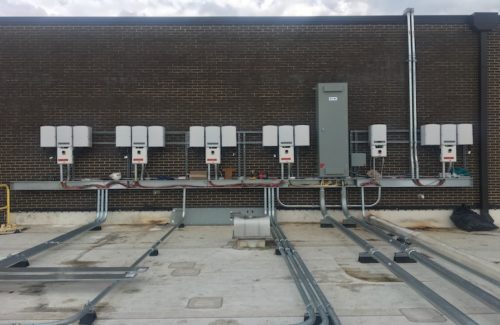
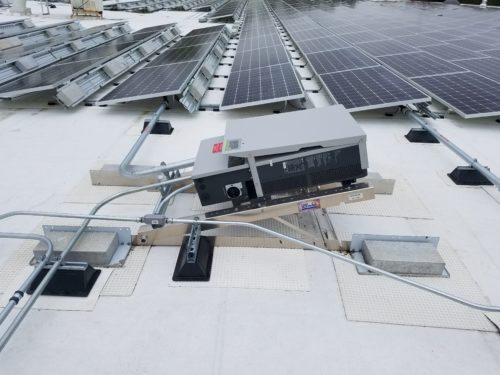
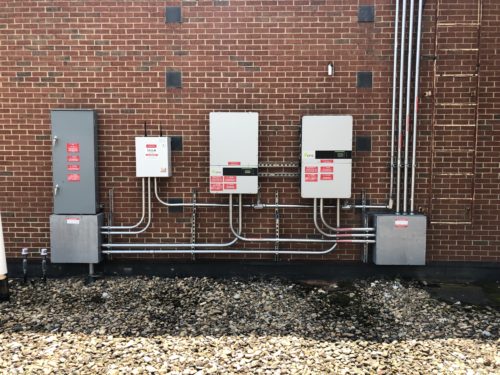
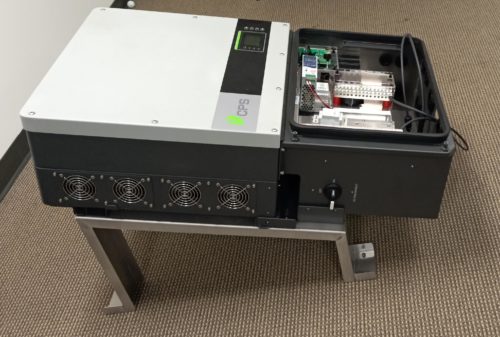
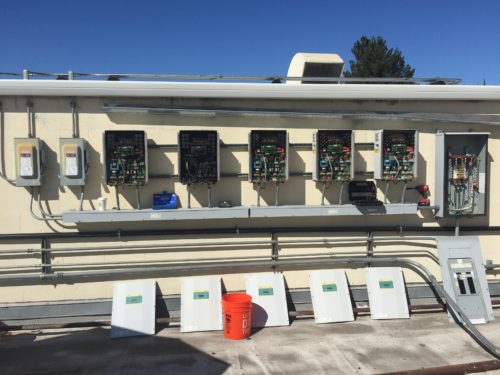
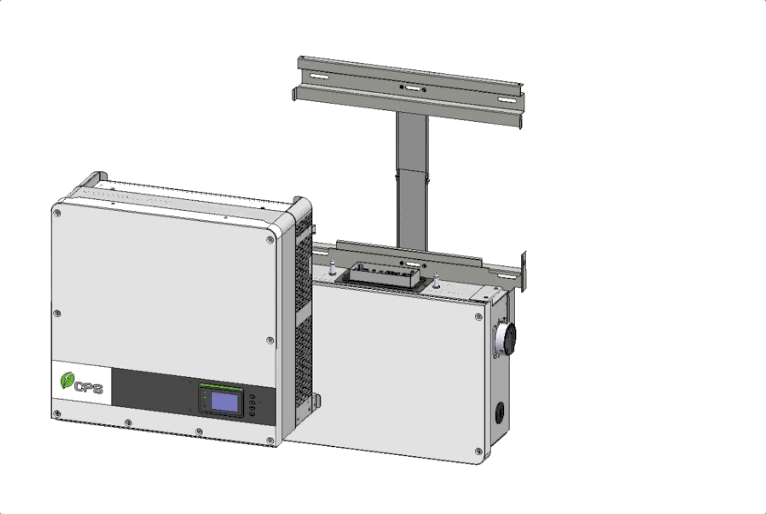
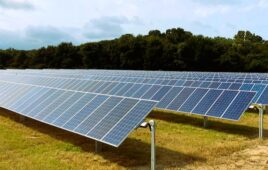
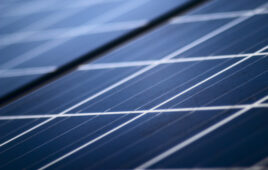
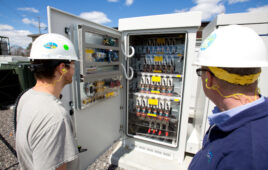
Good tips. Especialy in India where heat and moisture are a part of life. Only the costs are over the head but af=gree that the dollars are used to do research and royalty and future. Solar panel ready Tin or Steel Roof top designs to support such solar panels and Inverters need to be standarised and if possible given on template for all. FREE design since most Indians use cheaper labour and end up penny wise pound foolish
Good Idea to put inverters also on the roof as it facilitate usual inspection and maintenance. As regards control of temperature , is it not feasible to include temperature control fans similar to that installed in control panels in electrical installation.